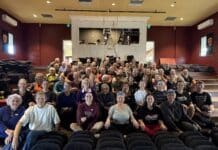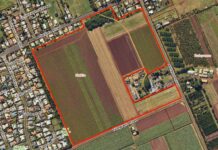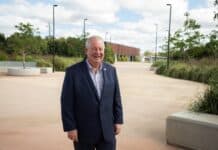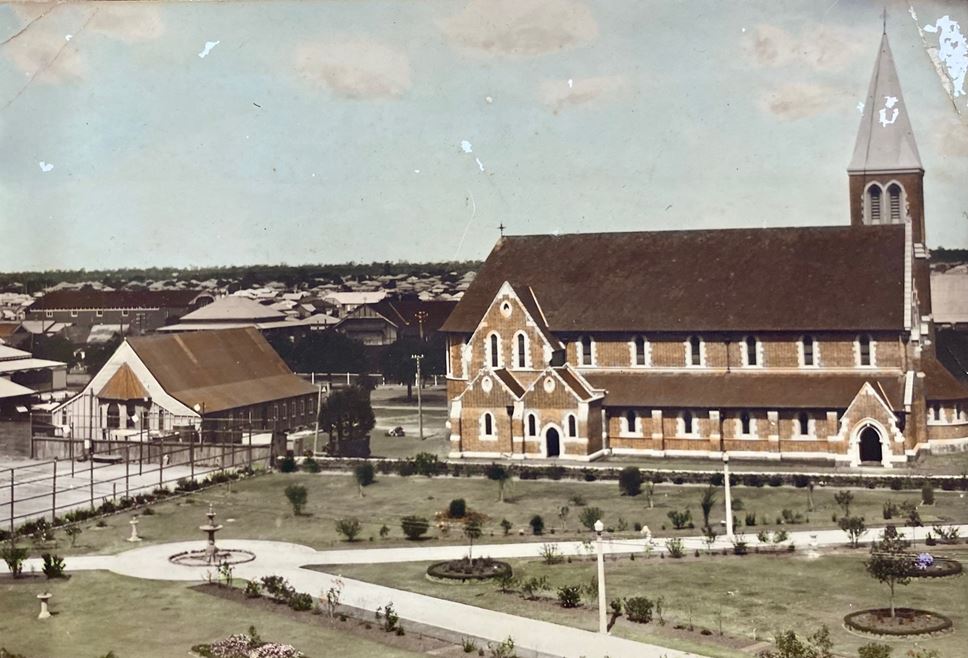
Standing tall on the corner of Woongarra and Maryborough Streets, Christ Church Anglican Church has been a prominent structure in the Bundaberg CBD ever since it was first constructed in 1927.
Featuring a gothic style with characteristics including pointed arches with mouldings in porches, windows and arcades, the Anglican church is heavily influenced by English and European architecture.
Photos depicting the church from its early construction stages show just how much effort the build required.
Local man and church member Ken Parsons is the current owner of the historic photos, who said he was gifted them by a neighbour some years ago.
Ken, who was married in Christ Church and who is a also a member, said the photos served as a reminder to the community of the significance of the building.
“These photos show just how hard it was originally to build the church,” he said.

“It really is something special- just the age of it, the stained glass windows, the colour of the bricks and the inside of the building is beautiful.”
The Bundaberg Regional Libraries’ heritage research team published an article outlining the history of the site and the effort that went into the build.
The construction of Christ Church was first established after the Bishop of Brisbane, W.T.T Webber, visited Bundaberg in 1886 and promised the people of the parish that a permanent church would be built.
The structure was completed in 1927 after more than 40 years of planning and preparation, but fittings and interior were not completed until the mid 1930s.
The design and plans for the church were drawn by the Diocesan Architect Mr J Hingeston Buckeridge of Sydney and showed a simple but spacious and beautiful building which would accommodate up to 600 worshippers.
The cost was estimated at 6000 pounds with extra funds for the construction raised by subscriptions, appeals, bazaars and individual donations from Bundaberg residents.
Christ Church build a mammoth effort
Due to various reasons, the building of the church was delayed until after Wold War I and saw Mr F.H Faircloth appointed as architect.
The original plans, first drawn by Mr Buckeridge, were adapted to allow for the use of bricks and concrete as the primary building material.
The foundation stone for the church was finally laid on August 9, 1920 by Bishop Le Fenu.
Construction of the church was a rigorous day labour task, with workers using rope pulleys, blocks and tackles as the main mechanisms for the build.
The open roof was constructed in Oregon pine and was the only section built by contract labour.
The Christ Church grand reveal
Christ Church was officially opened on Sunday, 20 February 1927 by the Archbishop of Brisbane, the Most Rev. G. Sharp.
In 1928 the Rev A. H Osborn became the new Rector of Christ Church.
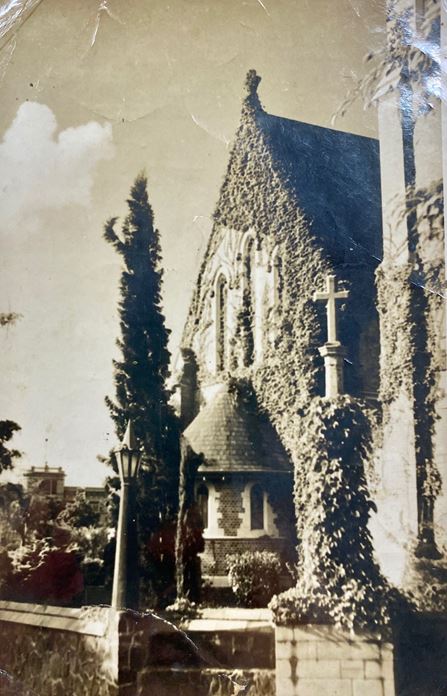
It was during his incumbency that much of the interior of the building was designed and installed, with many of the interesting features a direct results of the Reverend’s trips to England and Europe.
The Lychgate and Wayside Cross were erected after 1930 and the creeper vine covering these structures was grown from a cutting brought back from Glastonbury Abbey.
Rev. Osborn also collected the remains of several stained glass windows from overseas for Christ Church.
Many of the other features of the building have been donated by pioneer families in Bundaberg.
The fine wooden reredos in the sanctuary were donated by the Buss family, who were also responsible for the cost of building the church tower.
One of the more spectacular features of Christ Church is a brass lectern with the figure of an eagle attached, which was donated by Miss Tanner in memory of her brother the Rev. E. Tanner, who was the first ordained Anglican priest in Bundaberg.
The lectern was made in England and is acknowledged as one of the finest lecterns in Australia.
Restoration works a first for Christ Church
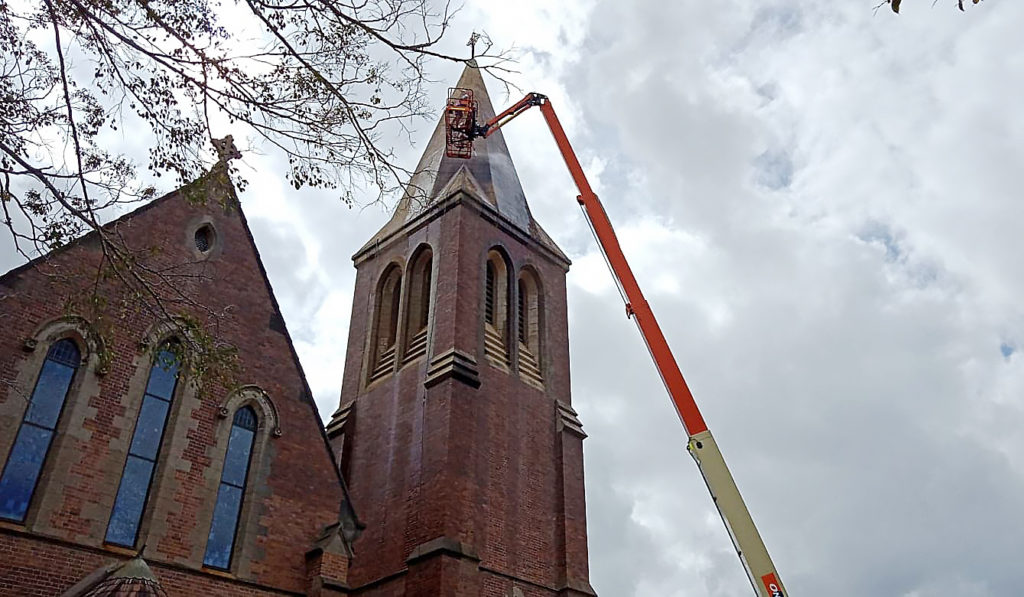
The Christ Church steeple has been undergoing a clean. 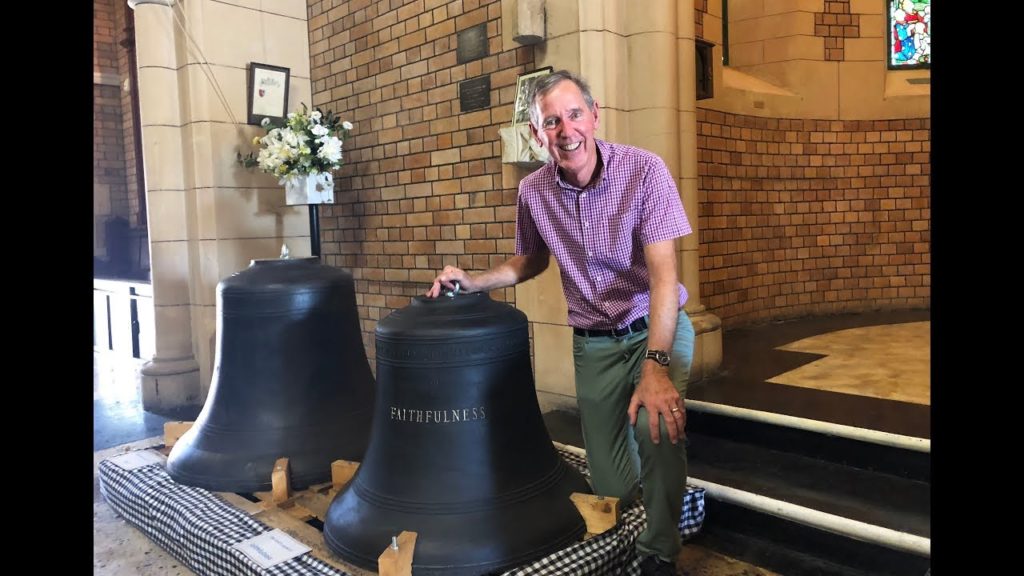
The Peace Bells.
In 2019, the church underwent multiple restoration projects for the first time since it’s construction.
The steeple was given a fresh coat of paint and the window glass was removed and re-worked earlier in the year.
Six Peace Bells were also introduced to the building and the original organ was transformed back to its former glory.
The pipe organ, which is housed in an organ chamber built over the north side of the church, has been a feature of the church since 1927.
It is one of only three in Australia and is unique in that it is mechanical rather than pneumatic.

Related stories: Classical recital will celebrate church organ restoration

